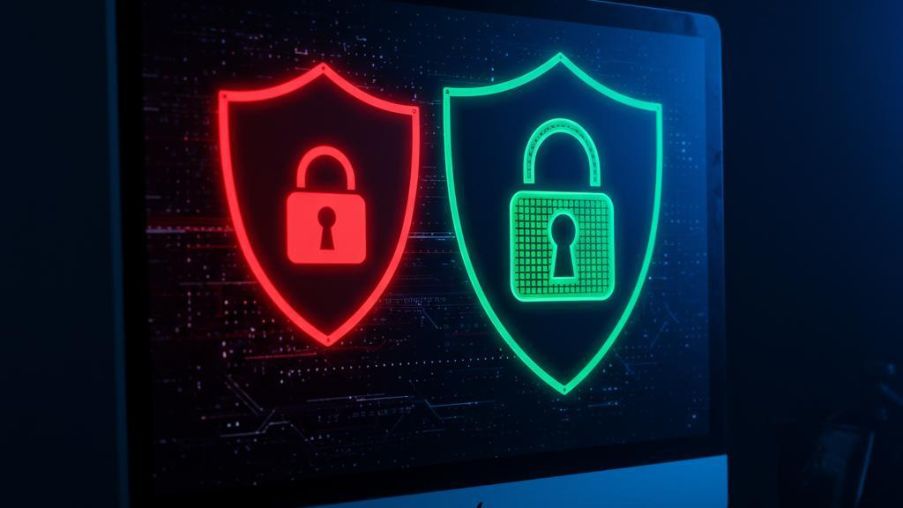What Are the Three Types of Patch Management?

The three types of patch management are security patches, bug fixes, and feature updates. Security patches fix vulnerabilities that hackers exploit. Bug fixes resolve software errors and crashes. Feature updates add new functions and capabilities.
What Are Security Patches?
Security patches are software updates that fix vulnerabilities in systems and applications. These patches close security holes that cybercriminals use to access networks, steal data, or install malware.
Security patches address specific weaknesses like weak authentication, data encryption flaws, access control failures, and network communication problems. The Cybersecurity and Infrastructure Security Agency states that patches "address security vulnerabilities within a program or product."
Critical Security Vulnerabilities
Security patches fix different vulnerability types including buffer overflows, SQL injection flaws, cross-site scripting attacks, and privilege escalation bugs. Each vulnerability type requires specific patch approaches and testing procedures.
Zero-day vulnerabilities receive emergency patches outside normal release schedules. These patches need immediate deployment because attackers actively exploit unknown security holes.
Why Security Patches Matter Most
Security patches require immediate deployment because 95% of cyberattacks target unpatched vulnerabilities. The 2017 WannaCry ransomware infected over 200,000 computers in 150 countries by exploiting an unpatched Microsoft Windows vulnerability.
Data breaches from unpatched systems cost organizations an average of $4.45 million per incident according to IBM's 2024 Cost of a Data Breach Report. Small businesses face average costs of $3.31 million per breach incident.
Security Patch Deployment Timeline
- Critical patches: Deploy within 24-72 hours for actively exploited vulnerabilities
- High-severity patches: Deploy within 1 week for serious security flaws
Organizations handling sensitive data should implement managed IT security services for consistent security patch management across all systems.
What Are Bug Fix Patches?
Bug fix patches resolve software errors that cause crashes, performance issues, or unexpected behavior. These updates repair coding mistakes that affect system stability without creating security risks.
Common bugs that patches fix include application crashes, slow performance, display errors, data corruption, and software compatibility problems. Bug fixes improve system reliability and user productivity.
Types of Software Bugs
Critical bugs cause system crashes or data loss and need immediate fixes. Major bugs significantly impact functionality but don't crash systems. Minor bugs create small inconveniences without affecting core operations.
Performance bugs slow down applications and reduce user productivity. Compatibility bugs prevent software from working properly with other programs or operating system versions.
Bug Fix Categories
Application bugs affect specific programs like Microsoft Office, web browsers, or database management systems. Operating system bugs impact Windows, macOS, or Linux core functions. Driver bugs cause hardware compatibility problems with graphics cards, printers, or network adapters.
Bug Fix Deployment Strategy
Deploy bug fixes during scheduled maintenance windows to minimize business disruption. Test thoroughly before applying to production systems. Prioritize fixes based on business impact and user complaints.
Document all bug fix deployments for compliance auditing and future reference. Monitor system performance after deployment to verify successful resolution.
Organizations requiring comprehensive system maintenance should consider managed IT department services for professional bug fix management.
What Are Feature Update Patches?
Feature update patches introduce new capabilities or enhance existing software functions. These updates add tools, improve interfaces, optimize performance, and provide additional customization options.
Feature updates increase productivity through new workflows, enhance security with better authentication, and maintain competitive advantage with current industry standards.
Feature Update Categories
User interface updates improve navigation, add new menus, and enhance visual design elements. Functionality updates add new tools, reporting capabilities, and integration options with third-party software.
Performance updates optimize memory usage, reduce CPU consumption, and improve application response times. Security feature updates add multi-factor authentication, encryption improvements, and advanced access controls.
Feature Update Benefits
- Improved user productivity through streamlined workflows and automation tools
- Enhanced system performance with optimization improvements and resource management
Feature updates also provide better integration with cloud services, mobile device support, and modern web standards compliance.
Managing Feature Updates
Plan feature deployments during low-usage periods to minimize user disruption. Train users on new functionality before rollout. Document changes for support teams and create user guides.
Consider business impact before implementation. Some feature updates change familiar interfaces and require user adaptation time.
Organizations seeking comprehensive technology upgrades should explore enterprise software solutions with managed update services.
How Do the Three Patch Types Work Together?

Patch types work in priority order: security patches first, bug fixes second, feature updates third. Security patches protect against immediate threats. Bug fixes maintain system stability. Feature updates add business value.
Patch Priority Framework
High Priority: Critical security patches for actively exploited vulnerabilities and zero-day attacks
Medium Priority: Major bug fixes affecting business operations and important feature updates with security improvements
Low Priority: Minor bug fixes and optional feature enhancements that don't impact core functionality
Deployment Approach
Most organizations use a three-tier strategy based on risk assessment and business impact analysis:
- Emergency deployment for critical security fixes affecting internet-facing systems
- Scheduled deployment for bug fixes during planned maintenance windows
This approach balances security protection with operational stability requirements.
What Is the Patch Management Process?
Patch management follows five steps: assessment, testing, approval, deployment, and verification. This process maintains system security while minimizing operational disruption.
Step 1: Assessment and Inventory
Create a complete inventory of systems, operating systems, installed applications, network equipment, and mobile devices. Document versions and configurations for each system.
Vulnerability scanning tools identify missing patches and security weaknesses. Asset management databases track software licenses and support contracts.
Step 2: Testing Environment
Test patches in isolated environments that mirror production systems. This identifies compatibility issues and performance impacts before widespread deployment.
Staging environments should include representative hardware configurations, software versions, and network connectivity similar to production systems.
Step 3: Change Management
Implement formal approval processes for patch deployment. Document business justification, risk assessment, and rollback procedures for each patch release.
Coordinate with business stakeholders to schedule deployment during acceptable maintenance windows.
Organizations should consider complete compliance services for regulatory patch management requirements and audit documentation.
How Do Different Industries Handle Patch Management?
Industry-specific regulations determine patch management requirements and timelines. Healthcare, financial services, and government sectors have strict compliance standards.
Healthcare Patch Management
HIPAA requires healthcare organizations to maintain updated systems protecting patient data. Medical device software needs careful testing to avoid patient care disruption.
Healthcare systems must balance security updates with medical device uptime requirements. FDA-regulated devices require vendor approval for software modifications.
Electronic health record systems need coordinated patching to maintain data integrity and availability. Backup systems must remain operational during primary system maintenance.
Healthcare organizations benefit from healthcare compliance solutions for specialized patch management.
Financial Services Requirements
Banks must meet PCI DSS compliance while maintaining real-time transaction processing. Financial data protection standards require documented patch procedures.
Payment card industry standards mandate quarterly vulnerability scans and prompt security patch deployment. ATM networks and point-of-sale systems need specialized patch management procedures.
Government Contractor Standards
Defense contractors follow CMMC requirements for classified system protection. Detailed audit documentation and vendor approval processes are mandatory.
NIST 800-53 controls specify patch management requirements for federal information systems. Continuous monitoring and risk assessment support compliance verification.
Government contractors can use government compliance services for specialized support.
Manufacturing Operations
Manufacturing environments use industrial control systems requiring specialized patch management. Production line uptime takes priority over immediate security patching.
Scheduled maintenance windows align patch deployment with planned production downtime. Safety systems need independent testing and validation procedures.
Manufacturing organizations should explore manufacturing compliance solutions for industrial system patch management.
What Are Common Patch Management Challenges?
The biggest challenge is balancing deployment speed with system stability. Security patches need quick installation, but rushed deployments can cause system failures.
Resource and Staffing Challenges
Small IT teams struggle with patch testing, deployment scheduling, and system monitoring. Limited staff cannot maintain 24/7 patch management operations.
Budget constraints prevent organizations from purchasing automated patch management tools and testing infrastructure.
Technical Integration Issues
Legacy systems often lack modern patch management support. Custom applications require specialized testing procedures and vendor coordination.
Network segmentation complicates patch deployment across multiple security zones and geographic locations.
Challenge Solutions
Downtime management: Schedule maintenance during low-usage periods and communicate clearly with users about system availability.
Resource constraints: Use automated tools or managed services to reduce manual workload for small IT teams.
Compatibility issues: Maintain detailed system documentation and test in isolated environments before production deployment.
Organizations facing these challenges benefit from business managed IT services that provide comprehensive patch management support.
How Do You Measure Patch Management Success?
Track three key metrics: patch deployment speed, system uptime after patching, and security incident reduction. These measurements show patch management effectiveness and compliance status.
Security Metrics
- Time from patch release to deployment across all systems
- Percentage of systems with current security patches applied
- Security incidents from unpatched vulnerabilities per quarter
- Vulnerability scan results showing patch compliance status
Operational Metrics
- System uptime after patch deployment measured monthly
- User productivity impact during maintenance windows
- Support tickets related to patching and system issues
- Mean time to recovery after patch-related problems
Compliance Metrics
Audit results show patch management process effectiveness. Documentation completeness supports regulatory compliance verification. Risk assessment updates reflect current security posture improvements.
What Tools Support Patch Management?
Automated patch management tools provide vulnerability scanning, centralized deployment, and compliance reporting. Modern solutions integrate with existing IT management systems for streamlined operations.
Automated Solution Benefits
- Faster vulnerability detection through continuous scanning of all network systems
- Centralized control across multiple locations and diverse system types
Automated tools reduce manual workload and human error. Scheduling capabilities support maintenance window planning and user notification systems.
Cloud-Based Management
Cloud solutions offer centralized management for distributed organizations, automatic updates for management software, and scalability for growing businesses.
Remote workforce management requires cloud-based patch deployment capabilities. Mobile device management integration supports bring-your-own-device policies.
Enterprise Integration
Patch management tools integrate with security information and event management platforms, IT service management systems, and configuration management databases.
Single sign-on authentication and role-based access controls support enterprise security requirements.
Organizations should consider enterprise technology services with integrated patch management capabilities.
What Does the Future Hold for Patch Management?
Artificial intelligence will automate patch prioritization and predict deployment issues before they occur. Zero-day response times will decrease with automated emergency patching capabilities.
Machine learning algorithms analyze vulnerability data, system configurations, and threat intelligence to optimize patch deployment schedules.
Emerging Technologies
Cloud-native patching will support containerized applications and multi-cloud environments. Kubernetes patch management requires specialized tools for container orchestration platforms.
DevSecOps integration will make patch management part of continuous deployment pipelines. Infrastructure-as-code practices automate patch testing and deployment procedures.
Preparation Strategies
Invest in flexible, scalable patch management tools that support hybrid cloud environments. Train staff on emerging technologies and automation platforms.
Build relationships with trusted technology partners who understand modern patch management requirements. Maintain detailed documentation and standard procedures for audit compliance.
Frequently Asked Questions
What is the difference between patches and updates?
Patches are small, targeted fixes for specific problems while updates are larger releases with multiple changes. Patches typically address single vulnerabilities or bugs. Updates bundle multiple patches with new features and improvements.
How often should organizations deploy patches?
Critical security patches need deployment within 72 hours while routine patches can follow monthly schedules. Emergency patches for zero-day vulnerabilities require immediate deployment regardless of maintenance windows.
Can automated patch management replace manual testing?
Automated deployment works for routine patches but critical systems still need manual testing. Production environments with custom configurations require human oversight and validation procedures.
What happens if a patch breaks production systems?
Organizations need rollback procedures to restore systems to previous working states. Backup systems and configuration snapshots enable quick recovery from patch-related failures.
Do all systems need the same patch management approach?
Different system types require customized patch management strategies. Internet-facing systems need faster security patching than internal development servers. Critical production systems need more extensive testing procedures.
How much does patch management cost organizations?
Patch management costs range from $5-50 per endpoint monthly depending on automation level and service requirements. Manual patch management requires significant IT staff time and resources.
Final Thoughts
Security patches, bug fixes, and feature updates form the foundation of effective patch management. Security patches receive top priority for immediate threat protection. Bug fixes maintain system stability and user productivity. Feature updates add business value and competitive advantage.
Successful patch management balances deployment speed with system stability, considers business impact, and meets regulatory requirements. Organizations without dedicated IT teams should partner with experienced managed service providers for comprehensive patch management strategies.
Regular patching reduces security risks, prevents costly system downtime, and maintains compliance with industry regulations. Professional patch management services provide expertise, automation, and 24/7 monitoring capabilities that small IT teams cannot maintain independently.
Contact our team to learn how comprehensive managed IT solutions can streamline your patching process while meeting specific regulatory requirements for your industry.
.webp)
.webp)







.webp)





Share Post